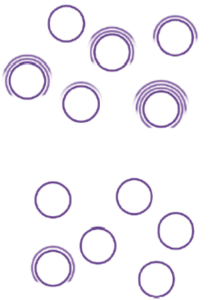
Higher coverage near the origin than near the terminus, especially in fast (top) compared to slow growing populations (bottom).
Scientific Achievement
We developed an algorithm, iRep, that uses draft-quality genome sequences and single time-point metagenome sequencing to infer microbial population replication rates.
Significance and Impact
This broadly applicable method is now widely used to profile bacterial activity in situ and to track organism responses to varying conditions, information that finds application in modeling studies.
Research Details
- A method that leverages information related to variation in genome coverage was developed to investigate in situ growth rates.
- The method was tested using published experimental data and applied to study groundwater bacteria
Citation
Brown, C. T.; Olm, M. R.; Thomas, B. C.; Banfield, J. F. (2016) Measurement of bacterial replication rates in microbial communities, Nat Biotech, 34(12), 1256-1263 DOI: 10.1038/nbt.3704.
